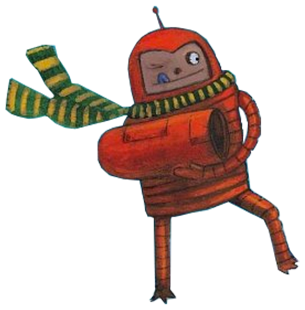
Well, raising a child is no easy task! You know it. We know it. You’ve heard it enough times to have you shaking in your boots. It is the SINGLE MOST IMPORTANT JOB YOU WILL EVER HAVE! No pressure! We are all facing the same iceberg! RIGHT AHEAD!
Whatever the age of the child that you are caring for: a newborn, a teenager, or any age between, raising them to adulthood is no cake walk. Or pie walk. Or any other dessert walk. Scratch that. We may need all the desserts possible!
Doing the bare minimum to raise them is hard enough. Raising them to be successful adults in their future relationships, friendships, careers, finances, and hobbies, etc is a compounding factor! Success is not impossible! But, it’s important and it takes planning and intentionality. Grab a cup of coffee and let’s demystify what might predict success in our children’s lives. Side note, if you have a newborn, so sorry you’re not getting enough sleep! Coffee will not remedy it. Much as we’d wish, those beans just aren’t that magical! Maybe go back to sleep and read the rest later!
So, Success. What does that look like in terms of raising a child? What are some skills that can predict our children’s success in the future? Obviously, there are a myriad of things that undergird success. For our purposes we are going to concentrate on the following 3 skills that, when taught early on, aids them in becoming successful:
1. Boundaries: External and Internal.
2. Delayed Gratification.
3. Resilience and Coping with Failure.
Let’s break each one down to discover how they help create future success. Take a sip and let’s get into it!
Boundaries: External and Internal
One of the best ways to make children feel secure is to tell them no! It seems counterintuitive, especially when it is followed by dramatic tantrums, but this is a fundamental way to build their sense of safety which is an important precursor to becoming a well-adjusted adult, which is a precursor to finding success. Okay, so you’re not just saying no, but you are consistently communicating the limits to them: What’s okay and what’s definitely not okay. What they are responsible for and how they can take up space in their world. These are External Boundaries. Let’s take a clean room as an example. If you set a rule about cleanliness and neatness of their room and regularly motivate and encourage them to keep up with this task, over time, you will have a child who cares about neatness and cleanliness of their environment! It’s a habit that will help them later in life! When children know what the limits are, they feel more secure and confident. They know they are loved and supported and that they will be put back on track if they veer off it!
Internal Boundaries teach them that they must take responsibility for themselves, too! Responsibility matures kids. Teaching them to recognize their internal compass increases their sense of self-confidence and independence. When children are encouraged to explore their own strengths, weaknesses, likes, dislikes, values and identity, etc, it allows them to create a foundation that they can refer back to any time they are faced with decisions. You may say, these internal boundaries change as they get older and as they experience more of the world around them. Sure! But, the earlier they learn to pay attention to them, the easier it will be for them to accept when change comes without creating a full-blown identity crisis!
Almost the most important part of the Boundaries conversation is the consistency. Setting up rules, habits, and baselines only work as long as they are practiced consistently over time! And consistency and discipline belong in the success conversation.
Delayed Gratification:
Our next skill on the road to success to discuss is Delayed Gratification- in our context, we will concentrate on teaching the difference between wants and needs. Now, let’s be real, we could use a refresher on this concept ourselves! The difference between wants and needs is a common lesson for kids to learn in school. But, this lesson can take on some new meaning as they get older and their wants become more expensive. Teaching children about the difference between wants and needs can help them make better decisions in life: whether it’s with spending, saving, or any other decision-making process. Depending on the age of your child introducing them to money and teaching financial responsibility is one of the tools you can use to illustrate this. Several years ago we started a simple process with our then 7 year old. We gave him three envelopes with Donation, Investment, and Cash written on each. We told him that anything he’d put in the donation envelope we would donate together to a cause he feels strongly about. Anything he’d put in the investment envelope would grow at a rate of 10% a month and could be withdrawn at the end of each month when the cycle is complete. Anything he had in the cash envelope was his to spend on anything he liked at any time. Full disclosure, we are not the authors of this specific tactic, but it made sense to us as parents and we used it. Almost as soon as we started this experiment, he realized that keeping money in the cash envelope was useless, so he would put all his money into the investment envelope and pull it out from there at the end of the month. In time, we noticed that he’d develop this pattern of spending half of what he had and if he needed to buy something that cost more than half of what he had, he would wait until he accumulated enough. Isn’t that incredible? This simple experiment helped him learn the value of money, and the concept of delayed gratification all at once. Managing money at such a young age is a valuable skill not just in terms of finances, but teaching the skill to slow down and think of your future goal before making a decision is too! Surely, we can all agree that thinking about how your decision can and will affect the future is imperative.
Resilience and Coping with Failure:
A singer once said: “The only thing constant in this world is change”. To that constant we’d like to add: Failure. Now, before you label us as pessimistic, hear us out! Failure is inevitable. Failure is difficult to accept. Failure makes us want to crawl into a cave and never try again. That said, children should be allowed to Fail. Royally. And as many times as they can within the safety of a parent’s guardianship and instructions. So you can comfort them and dry their tears and show them that there is a way forward. Failure is a good thing. It provides the opportunity to learn and grow and build resilience. If they are not allowed to fail, they will not easily grasp the concept of success! Once a child gets a firm hold on the concept of being resilient after failure, they can pretty much become unstoppable! It’s the ultimate life hack!
Phew! That wasn’t so hard now, was it? Boundaries, Delayed Gratification, and Resilience. Three life-enhancing skills that can change the trajectory of your child’s life. After reading through tons of research alongside our experiences as parents, what we have come to discover is that the person our child will be tomorrow depends on the child’s environment, the data they consume, and the approach we have to parenting. Hint, hint! This is true for us adults as well as for children! Ask yourself where you want your child to be 2, 3, 5, 10 years from now in terms of these 3 skills. What are the changes or additions needed to make sure their growth trajectory gets them close to those goals? With a little bit of intentionality, you’ll be on your own way to parental success!
Reading for Success:
Now, you might be sipping your now cold coffee and asking: What does any of this have to do with children’s books and reading? Quite a lot actually! Instilling concepts like Boundaries, Delayed Gratification, Money Management, Resilience and Failure can be filtered in through books. Story and metaphor are a near-perfect medium to help illustrate these concepts alongside your instructions. The visuals, the narrative, and the playfulness with which they can be delivered, can make complex concepts easily digestible. Books are your friends! They can come alongside you and aid you with your parenting goals. Finally, an answer to your “A LITTLE BIT OF HELP HERE!” Here are a few titles based on the 3 skills we discussed above:
Boundaries:
I Just Don’t Like the Sound of NO! by Julia Cook and Kelsey De Weerd, 2014
My Mouth is a Volcano by Julia Cook and Carrie Hartman, 2020
Delayed Gratification:
How Can I Wait When There’s a Treat on my Plate? By Dr. Dan Graham and Teresa Martinez, 2021
Alexander, Who Used to Be Rich Last Sunday By Judith Voight, 1987
Coping with Failure and Resilience:
After the Fall (How Humpty Dumpty Got Back Up Again) by Dan Santat, 2017
The Book of Mistakes by Corinna Luyken, 2017
There is no one way to raise a child. That’s part of what makes it a daunting task! However, you can demystify the experience by looking long-term and then working your way backwards and creating small goals along the way. We cannot control what our children will choose as far as a career, hobbies, or who they will be as life partners, friends and co-workers. What we can do is give them internal structural integrity by teaching them boundaries, delayed gratification, and resilience so it becomes a little easier to get there. And never stop using books along the way! You’re setting yourself up for success at the single most important job you will ever have. Good looking out! Well done, you!


